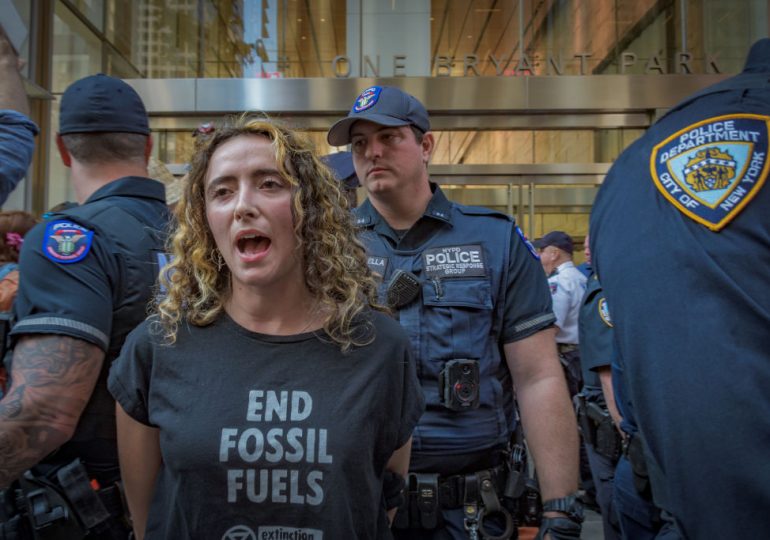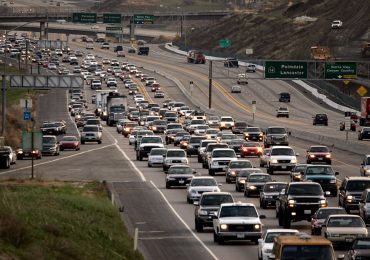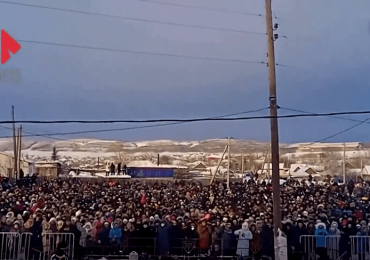This article is part of The D.C. Brief, TIME’s politics newsletter. Sign up here to get stories like this sent to your inbox.
For the last few cycles, Democrats have taken too many of their supporters for granted. As working-class voters suspected the party cared more about woke jargon and performative ultimatums than the needs of their former base, the thinking went that a new coalition of younger, progressive activists steeped in campus activism would backfill the workers’ exodus. All the while, communities of color were seen as permanent assets for the Democratic column come Election Day. No one uses the term these days, but a carbon-neutral iteration of limousine liberalism did Democrats no favors in recent years.
[time-brightcove not-tgx=”true”]
That elitism, a compelling new book argues. has led to a party that is far more at risk of following the Republican Party into an extremist spiral that could take decades to steer out of than they’ve really recognized. And as the trope goes: It’s the economy, stupid.
That’s the distilled take-away from John B. Judis and Ruy Teixeira, a pair of political historians who, 20 years ago, predicted the rise of the coalition that put Barack Obama in power but failed to fully understand what might follow afterward. In their new book, Where Have All the Democrats Gone?: The Soul of the Party in the Age of Extremes, they argue that Democrats blindly believed that they were coasting to a generation of dominance based on their self-congratulating condescension toward white working-class voters.
In a way, the finely written book counsels a return to New Deal populism that prioritizes opportunity over identity politics, and inclusion over tribalism. Lining up nicely with the 15th anniversary of Obama’s history-making victory, and on the heels of polling from the New York Times that has liberals panicked about Joe Biden’s re-election prospects, it’s tempting to consider how the once-ascendant Democratic majority found itself adrift if not alone. The book also should be required reading for every Democratic campaign manager in the field right now. Its warnings may prove as ultimately ill-aging as Judis and Teixeira’s prophetic framework of how someone like Obama could rise to power and change the party, but they are some of the most well-considered and clear-eyed analyses of the Democratic Party as it stands today. The following transcript of our conversation last week has been edited and condensed.
TIME: So let’s get at the premise of this book. Answer your question: Where have the Democrats gone?
Judis: They’ve gone from a party that was rooted in the working class to a party that has the appearance of an hourglass, with a lot of upscale voters and upper-middle class professionals, and a lot of voters who are not that well off, including a considerable number of minorities. But what’s missing is a lot of what used to be the middle of the party, which is blue-collar workers, primarily white, Midwestern, and Southern.
Teixeira: We argue in the book Democrats have done best historically when they’ve been seen as the party of the people, of the common man and woman, of the ordinary American. It’s increasingly not been the case the last half century. We trace the economic divide between working-class and college-educated people, and Democratic policies were implicated as the labor movement declined and as they became increasingly susceptible to the influence of the [interest] groups and Wall Street and Silicon Valley. We trace the evolution of cultural radicalism, which is this sort of diffusion out of the campuses of a rarefied vocabulary about race, gender, and so on. A different attitude toward issues around crime and immigration, and a general tendency to see everything in these intersectional terms of oppression and oppressor, the marginalized or non-marginalized.
TIME: Was there a breaking point for the Democratic Party?
Judis: It wasn’t just one time. The first big change comes after Civil Rights in the ‘60s. You really should look at the Nixon election where all the George Wallace voters, many of whom were Democrats, go into the Republicans. And it’s not just a matter of segregation and desegregation. It’s also the counterculture, patriotism, acid, amnesty, and abortion. Democrats lost out in the 1970s when Carter is unable to contain inflation and unemployment and when he points [Paul] Volcker [as Federal Reserve chair] and the party really loses its reputation as the party that can help the economy.
Teixeira: You could clearly see this in the Gallup data. They’ve asked a question about which party could better provide prosperity for the country going forward. At that point, the Democrats start losing these double-digit advantages they had on that question and actually start being negative on it, or barely positive. Particularly for working-class people, they are not any longer the party of prosperity.
Judis: What happens in the ‘90s is Clinton figures out how he can win elections. The idea of a New Democrat, who combines a kind of neoliberal economics, free trade, immigration, financial deregulation, moderation on social issues, moderation on guns to be tough on crime. They ride the boom of the 1990s, but when the 2000s come and this unemployment begins to occur, de-industrialization in the Midwest, and when people see their jobs going to China, to Mexico, you get the second big backlash against the Democrats.
Obama benefits again from Bush, the Iraq War, Katrina, the Great Recession, and wins in 2008. But Obama doesn’t quite do it. He gives into the idea that he can’t increase deficits too much so the economy still staggers. Obamacare benefits poor people, the lower middle class, but other people see their premiums going up. In 2010, the Democrats get drubbed. Obama comes back in 2012 and at this point, Democrats become cocky and they adopt a comic book version of the emerging Democratic majority. Which is that It doesn’t matter if we get these working-class votes from the past, if we just get a minority majority plus some professionals and women.
And this guy Trump comes along. He promises to build a wall and stop illegal immigration. And lo and behold, a lot of these working-class voters support him. And he wins all these states that were seen as safe Democratic states in the Midwest. Democrats are losing voters, even though at the same time they win a lot of college-educated voters during that period. It’s just not enough in 2010, 2014, and 2016, to counteract the loss of working-class voters.
Teixeira: 2016 is a transition point because it’s at this point that the Democrats have been hemorrhaging white working-class voters in waves for a long time. But in 2016, they hemorrhage them so brutally in the Midwest, where actually the white working-class vote was holding up relatively well, to the point where they couldn’t hold those states. Critically, the way Democrats interpreted this defeat was this must be attributable to the racism and xenophobia of the white working class and who needs them: We’re gonna’ double down on the rising American electorate. Everybody hates Trump. There’s really no need to rethink our approach to those kinds of issues that Trump raised. Who would want these voters who are so reactionary?
That affects how the Democratic Party thinks about its political strategy going forward because they don’t think very hard or very long about why they lost white working-class voters. They have spent 40 years talking about the depredations of neoliberalism, the flaws of neoliberal economics that was devastating communities leaving people behind, how the rich control everything and they don’t care about the working class. But these voters were rising up and saying enough.
Judis: I’ve seen this from interviews and polling that a key issue was this political correctness, which summed up the kind of cultural differences that have arisen among small towns and mid-size towns—that had been decimated by de-industrialization or depended upon resources, extraction, mining, farming—versus the big metro centers with high tech, finance, education, advanced healthcare, things like that where you have two different kinds of ways of life and identities about what people think are important.
People from small town, mid-size town America, who lived there for their whole lives, who expect their children to have the same jobs, who see their lives kind of being uprooted and fall back on ideas of family, nation, religion, faith, guns as a protection of the home. So you really have this kind of clash of identities.
Teixeira: The Democrats actually do quite well in 2018 because moderate candidates do well, basically running against Trump and on an economic-oriented and healthcare-oriented Democratic program. But that’s interpreted after 2018 as indicating the rising American electorate is taking over the party because AOC wins. Staggeringly, very few people point out these are [Democratic-leaning] districts. You could run your pooch in these districts and they win.
People running for the 2020 presidential nomination for the Democrats all tried to figure out how to run to the Left of each other so they could allegedly appeal to this rising electorate and to the young people who were leading the party forward. In the end, of course, Biden gets the nomination because he’s way more moderate and sensible than the rest. He appeals particularly to Black voters, which just shows how the interpretation of what the minority vote is about was in many ways quite mistaken.
But another transition point then hits in 2020. And that had been building for a while, which is the defection of non-white working class voters for the Democratic Party. In a way, Democrats have been quite relaxed about the defection of working-class voters because they figured they were all white workers. They’re not on the right side of history. Hispanic working-class voters bail out to the tune of like an 18- or 20-margin points swing against the Democrats in 2020. If non-white working-class voters bail out in increasing numbers on the Democrats, that puts the whole demographics-as-destiny strategy into serious question.
We can see in the polling data that’s been collected in the last year or two that the weaknesses of Democrats among non-white voters, particularly Hispanic and Black working-class voters, is pretty significant. They’re sort of realizing this is a problem. On the other hand, they’re so invested in this whole vector of cultural issues. They’re worried about the blowback on social media and from the college-educated “liberalish” voters who are increasingly a loyal base of the Democratic Party.
Trump understood that and he played upon it. He continues to play upon it. He continues to get votes upon it. And the Democrats are oblivious to it.
TIME: Is Trump the smartest political strategist of this era?
Judis: He has an incredible intuition. He is ill-informed about a lot of things. He’s by no means an intellectual or a policy guy. But ‘Crooked Hillary?’ ‘DeSanctimonious?’ That would just stab people.
TIME: I want to pick up what was almost a throwaway term: ‘liberalish.’ There’s almost a performative aspect right now among liberals about what you have to do if you’re a liberal, and how you have to behave yourself and demonstrate your credentials in the public arena. Has that perverted what being a classical liberal means in this country?
Teixeira: I don’t think there’s any question about it. I mean, as the Democratic Party has become increasingly dependent on college-educated votes, and as college-educated ‘liberalish’ people have taken over the infrastructure, the Democratic Party, and taken over the foundations and the NGOs and the advocacy groups, and a good chunk of academia, these kinds of people who are in and around the Democratic Party. What people hear about from these sectors is exactly a certain kind of language. The clear implication that you don’t agree with them, you just don’t get it. You’re behind the times, perhaps borderline racist and reactionary.
That’s a very significant part of the alienation of the Democratic Party from working-class people because working-class people of any race, they are not ‘liberalish’ in that sense. They don’t feel the need for performative rights.
Judis: It’s alienating to other people ’cause they don’t understand what they’re talking about.
TIME: Have liberals lost the ability to read polling data? The numbers tell a very different story than where the Democratic Party’s leadership is pointing.
Teixeira: What we have is selective reading of the poll data. They don’t start from wanting to understand where voters are really coming from and what they really think. It’s more like, Here’s what we think as Democrats is the correct thing to be for and to push. And let’s see if there’s anything out there that might support what we already want to do. So it’s, it’s kind of backwards from the way they should do it.
Judis: A lot of politicians do understand the polling data, but they’re intimidated by what we call the Shadow Party: the big foundations, major news media, websites, advocacy groups. Their appeal to activist groups and donors leads politicians saying some things that are really completely out of left field and irresponsible, frankly.
TIME: What does the current discourse about the Middle East do to the Democratic Party?
Judis: Unless we get into a war there ourselves, I would be surprised if this is a big issue in a year. It shows a lot of fissures within the Democratic Party now, but I think Ukraine is going to be a bigger issue. There’s been a growing difference within the party between what you could call the AIPAC wing and another wing that you have to divide into two: J Street and these groups on campus. I think that the campus groups are on the fringe, but that’s a serious division among those three groups.
Teixeira: My sense is that there’s a lot of people in and around the Democratic Party who have been leery for quite a while of the sort of intersectionality that’s taken over the party. Everything has to be decolonized, everything has to be thought of in terms of equity. I think that has really, really annoyed a lot of people who were formally tolerant of a lot of nonsense in other spheres. And it’ll be interesting to see the extent to which that might contribute to increasing the opposition and pushback within and around the party towards some of the crazier elements of the progressive left that has melded all these issues together: Free Palestine, climate justice, getting rid of mass incarceration, decriminalizing crime, the border. They’re all together, right?
TIME: It’s intersectional, isn’t it?
Teixeira: The extent this might contribute to trying to separate themselves from the intersectional left and the kind of inexcusable nuttiness that would lead people to be soft on the Oct. 7th massacre. It might make a constructive contribution.
TIME: So you ask where the Democrats have gone in the title of the book. Where do Democrats go from here?
Judis: You have to talk about where American politics goes from here. The two parties are conjoined to each other in a very strange way. Both parties have these extreme wings that are not palatable to the American public. That can’t win a majority. The party that wins is the party that makes the other party’s extremes more salient. So in 2022, Democrats win in areas where the voters see the Republicans as the party of “Stop the Steal” and prohibit abortion. They lose where voters see Democrats as the party of “Defund the Police,” let anybody in the country who wants to come in. So really what’s happened is that we have this kind of culture war situation between the two parties.
Teixeira: Both parties would benefit from moving to the center on a lot of these hot-button issues, but I don’t think the impetus is there for at the current time, and I don’t expect it to manifest itself in 2024. We have this unstable equilibrium between the parties.
TIME: This has been great. Thank you for your time.
Make sense of what matters in Washington. Sign up for the D.C. Brief newsletter.
Leave a comment
















